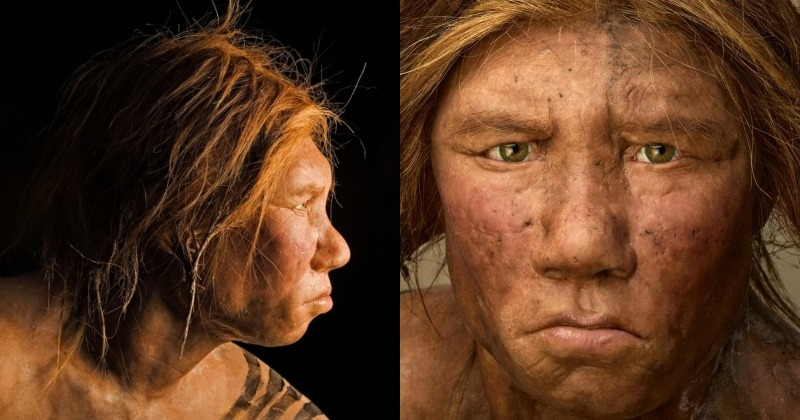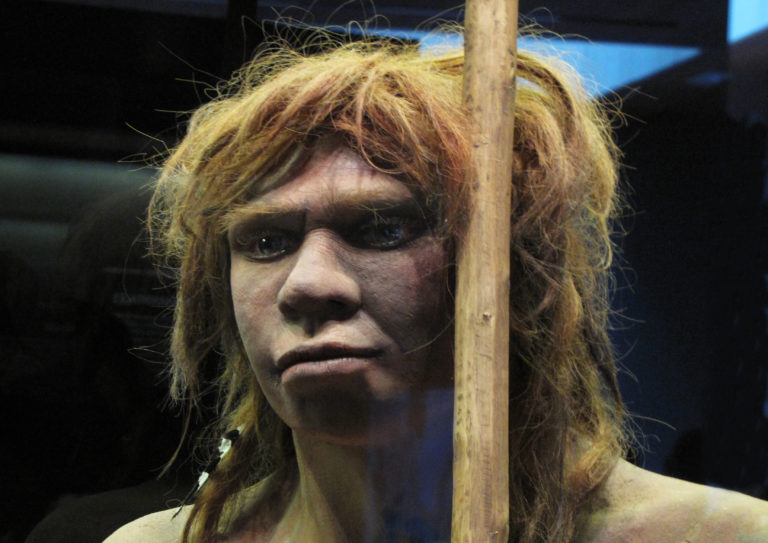In 2018, a groundbreaking discovery reshaped our understanding of human evolution. Researchers introduced the world to Denisova 11, a 13-year-old girl who lived over 50,000 years ago. What made her story remarkable? She was the only known individual in history with parents from two distinct hominin species—her mother was a Neanderthal, and her father a Denisovan. This revelation offered a rare glimpse into the ancient interactions between these two species and opened up a myriad of questions about their migration patterns, genetic exchange, and social structures.

To truly appreciate the significance of Denisova 11’s ancestry, it’s important to understand the two species that contributed to her genetic makeup.
Neanderthals (Homo neanderthalensis) were a resilient species that thrived in Europe and parts of Western Asia for tens of thousands of years. Known for their robust build, exceptional hunting skills, and ability to adapt to harsh climates, they managed to survive numerous ice ages. However, they disappeared around 30,000 years ago, leaving behind traces of their existence in fossils, artifacts, and now, our DNA.
Denisovans, on the other hand, are far more mysterious. Discovered through fragmented remains in Siberia’s Denisova Cave, these ancient relatives (Homo sapiens denisova) remain enigmatic. We know little about their physical appearance or way of life. Yet, thanks to genetic studies, we now understand that Denisovans interbred with modern humans and left a lasting genetic legacy in populations across Asia and Oceania.
Denisova 11, also known affectionately as “Denny,” became a scientific sensation due to the extraordinary revelation that her parents belonged to two different hominin species. Genetic analysis of a single bone fragment revealed this young girl was the offspring of a Neanderthal mother and a Denisovan father. It was the first concrete evidence of a first-generation hybrid between these two species.
This discovery was monumental for several reasons. It not only confirmed that Neanderthals and Denisovans interbred but also indicated that such interactions were more common than previously believed. Up until this point, scientists had speculated about occasional interbreeding between the two species, but Denisova 11 provided tangible proof. This finding pushed the boundaries of what we thought we knew about ancient hominin interactions.
The existence of Denisova 11 calls into question the traditional boundaries we have set between species. For decades, researchers classified Neanderthals and Denisovans as separate branches of the hominin family tree. Yet, the discovery of a hybrid like Denny suggests that these ancient species were not as isolated from one another as once believed.
While Neanderthals and Denisovans each had their own distinct genetic makeup, their ability to produce viable offspring indicates that they were genetically compatible. This raises the fascinating possibility that ancient hominins, despite being categorized into different species, might have shared more in common than we initially thought.
The genetic analysis of Denisova 11 offered more than just insight into her parentage—it also revealed clues about the migration patterns of Neanderthals and Denisovans. Surprisingly, Denisova 11’s DNA showed a stronger connection to Neanderthals from Western Europe than to those found near Denisova Cave, where her remains were discovered.
This discovery suggests that Neanderthals traveled great distances, far beyond what scientists had previously thought possible. It challenges the assumption that Neanderthals were largely sedentary, revealing instead that they may have migrated across vast territories, interacting with other hominin groups along the way.
Denisova 11’s existence raises several profound questions. What were the social dynamics between Neanderthals and Denisovans? Did they coexist peacefully, or was their interbreeding driven by necessity or competition? What factors led to these two species coming together to produce hybrid offspring like Denny?
This discovery invites us to reconsider the interactions between ancient hominin groups. Far from living in isolation, these groups may have had complex relationships that included cooperation, competition, and even cultural exchange. Denisova 11 serves as a reminder that the story of human evolution is far more intricate than a simple branching tree—it is a web of interconnections that shaped the course of our ancestry.
The study of Denisova 11 highlights the importance of cutting-edge technology in unraveling the mysteries of our past. A key tool in identifying her hybrid ancestry was Zooarchaeology by mass spectrometry (ZooMs), a technique that enables scientists to analyze ancient bone fragments and determine their species.
Developed by Mike Buckley, ZooMs allows researchers to identify species based on collagen protein signatures, making it possible to differentiate between human and animal remains. This technique was crucial in discovering Denisova 11 and holds the potential to unlock further insights into other unknown hominin species and their interactions.

Denisova 11’s discovery has provided an unprecedented window into our evolutionary history. Her existence proves that the lines between species were not as rigid as we once thought. Neanderthals and Denisovans interacted, coexisted, and interbred, leaving behind not only physical traces but also a genetic legacy that still lives on in modern humans today.
This young girl, who lived more than 50,000 years ago, represents one of the most intriguing pieces of our evolutionary puzzle. Her hybrid ancestry offers a glimpse into a time when multiple hominin species roamed the Earth, shaping the genetic tapestry that eventually gave rise to Homo sapiens.
Denisova 11’s legacy extends far beyond the discovery of her hybrid ancestry. She symbolizes the complexity of human evolution, reminding us that our past is filled with unexpected connections and interactions. As researchers continue to study her remains and the DNA of ancient hominins, we are likely to uncover even more surprising details about the lives and relationships of our ancestors.
The case of Denisova 11 invites us to reconsider what it means to be human. It challenges us to think about our place in the broader context of life on Earth and highlights the shared heritage we have with species long extinct. In the end, Denisova 11’s story is not just about the past—it is about understanding who we are today.


